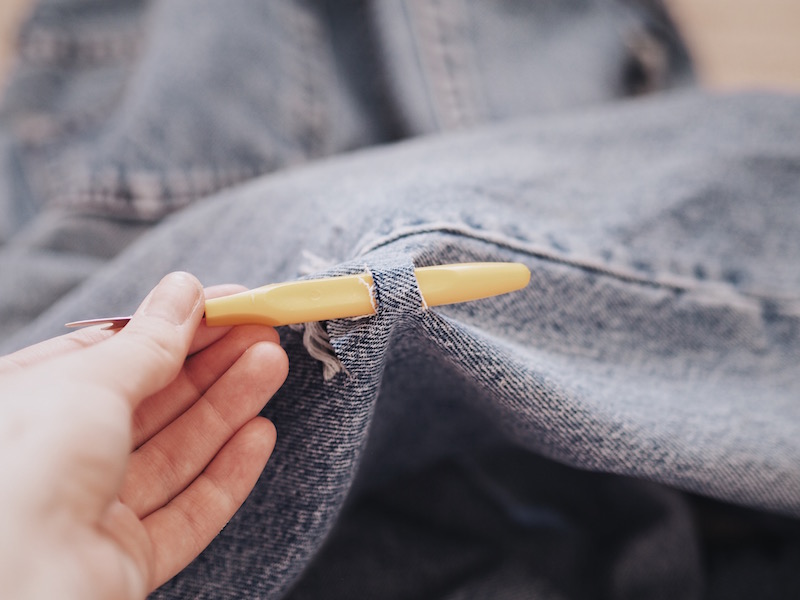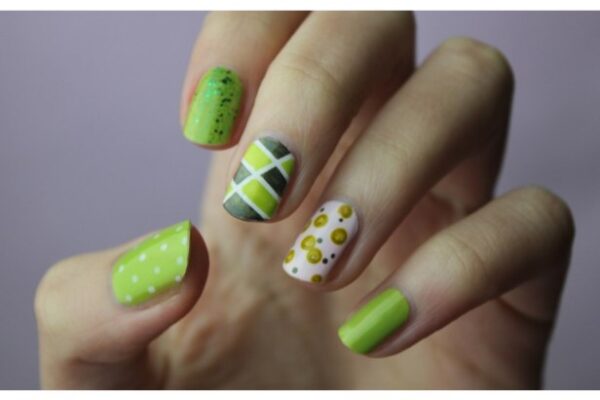The style of jeans you’re wearing will also influence how to distress them. Boyfriend jeans should look completely distressed to be worn properly. On the other hand, thin jeans are better off with small tears or other distressing. Making your own ripped jeans is therefore the best choice.
What Are Ripped Jeans?
Take your regular pair of jeans and give them a few rips, shreds, scrapes, frays, and fades. You own a pair of ripped or distressed jeans. It was a part of the grunge fashion movement, though we are unable to pinpoint its originator because they have essentially taken over by this point. Everything is torn, including jeans, shorts, jackets, and whatever else!
Any way you look at it, the words “ripped,” “distressed,” or “torn” all mean the same thing. You can also make them appear worn out or distressed by using a darker pair of jeans and fading them out with bleach or sandpaper. It’s true that our generation pays for things like this. Therefore, avoid getting caught in this cycle. Consider the DIY project for ripped jeans.
Understand the Types of Ripped Jeans
- Holes: Rather than merely sanding down the fabric, the distressing completely penetrates it, exposing some skin. Even though rips and holes sometimes overlap, rips typically have a distinct vertical or horizontal cut, whereas holes generally cover a larger area and expose more skin. For the purposes of these rules, avoid having holes cross to the other side of the material and instead keep them strictly to one side of the fabric, such as around, just above, or just below the knee. If not, it might affect how your jeans fit and feel when you wear them.
- Shreds: Also known as a ladder if carried out horizontally, sheds rip the fabric but not completely through, leaving fragments of thread holding it together and partially covering the hole.
- Scrapes or Scratches: Also known as an abrasion or whiskering in some contexts, this distressing technique entails using an abrasive material—more frequently, sandpaper in DIY projects—to wear away a portion of the material’s surface so that it appears thinner, faded, and more textured in comparison to the rest of the denim.
How to Rip Jeans?
Avoid New Jeans
Never purchase a pair (even secondhand) without first wearing them. You want to see how the clothing fits and hangs on you. This will give you a better idea of where to make holes in the fabric and distress it, and it will also help you avoid awkward situations later.
Remove The Threads
Basically, the white and blue threads in your jeans are arranged horizontally and vertically. Up until I completed this exercise, I knew nothing about this. Therefore, all you need to do to achieve this worn-in, striped appearance is to begin tweezing out the vertical blue threads from the patch that you had previously marked. Initially, it will be difficult to remove the first few threads, but as you go along, it will become much easier.
Wash Your Jeans
Give your jeans a few washes to give them a realistic appearance of being “aged” and to rough up the fibers before you start. The color can be broken down by adding a little bleach to the wash, but make sure nothing else is put in the machine with them.).
Dry
To get rid of any excess moisture that might prevent ripping, hang dry your jeans before cutting and ripping them. To hasten the drying process, put your jeans in the dryer on a gentle cycle for no more than ten minutes.
Gather Your Supplies to Distress and Rip
It pays to distress the jeans a little before you start cutting the holes if you want the ripped effect to be truly authentic. Steel wool, pumice stone, and sandpaper are the materials you’ll need for this. Use an X-Acto knife, a box cutter, or a pair of extremely sharp small scissors to make the holes. In order to prevent altering the back of the jeans unless you want to, we prefer to use a small wooden block or piece of cardboard inside the pant legs.
Fray The Pockets
It’s subtle and interesting to distress your jeans with frayed pockets. It makes it cool and gives it more swagger. Simply remove the outermost layer of the pocket without going too far. Then, either use a razor or sandpaper to scrape the surface or simply use tweezers to remove a few threads.
The Final Details
Now comes the slightly challenging part. Use the edge of your scissors—not the tip—to scrape down the length of the jeans horizontally in the places where you want the rips to appear (a penknife also works well because it is so precise). As soon as you notice the white threads, stop. Take a pair of tweezers and snip threads randomly. Threads should be cut with scissors or a penknife if you want holes. Finally, use your grater, pumice stone, or sandpaper to rough up a few more places where you might anticipate seeing natural wear and tear, like the ankles, a pocket, or the side.
How to Rip Jeans And Leave The White Thread
One way has one major drawback: you have to use the rips’ natural locations, as was already mentioned. You have very little control over the location of those rips or how big they will become.
If you want complete control over the position and size of those rips, you will have to add them yourself. The first method entails the use of a seam ripper, tweezers, a large pair of extremely sharp scissors, and some patience.
On an old pair of pants, practice will be conducted initially. In this way, if you perform a better pair, you can correct any mistakes and improve your rip technique and location.
The second step entails putting on the jeans and marking the locations of the desired rips. Although some people remove large patches, they simply do not have the legs for that style, so be sure to carefully mark the size of the rips.
The next step is to remove them and fold the jeans so that the side seams are up and down. After that, make your cuts using your scissors. Make sure to leave approximately 1/2 inch between each cut if you are doing parallel rips.
Repeat steps 4 and 5 for each cut you have made in your jeans. Additionally, you can decide whether to cut or leave any protruding threads. The entire process is up to you, but as we’ve already mentioned, some people take it too far and produce something that only satisfies their own aesthetic preferences.
When you rip jeans, you are also accountable for everything. With the exception of modesty, there are no rules to follow, so you have a lot of freedom to create a look that you like, even if it might not be popular.
You should only pull out one or two horizontal threads in step four using a seam ripper or tweezers. Then, using the tweezers, you pull a few of the blue threads out. However, you must exercise caution because the white threads are more delicate than the blue ones.





